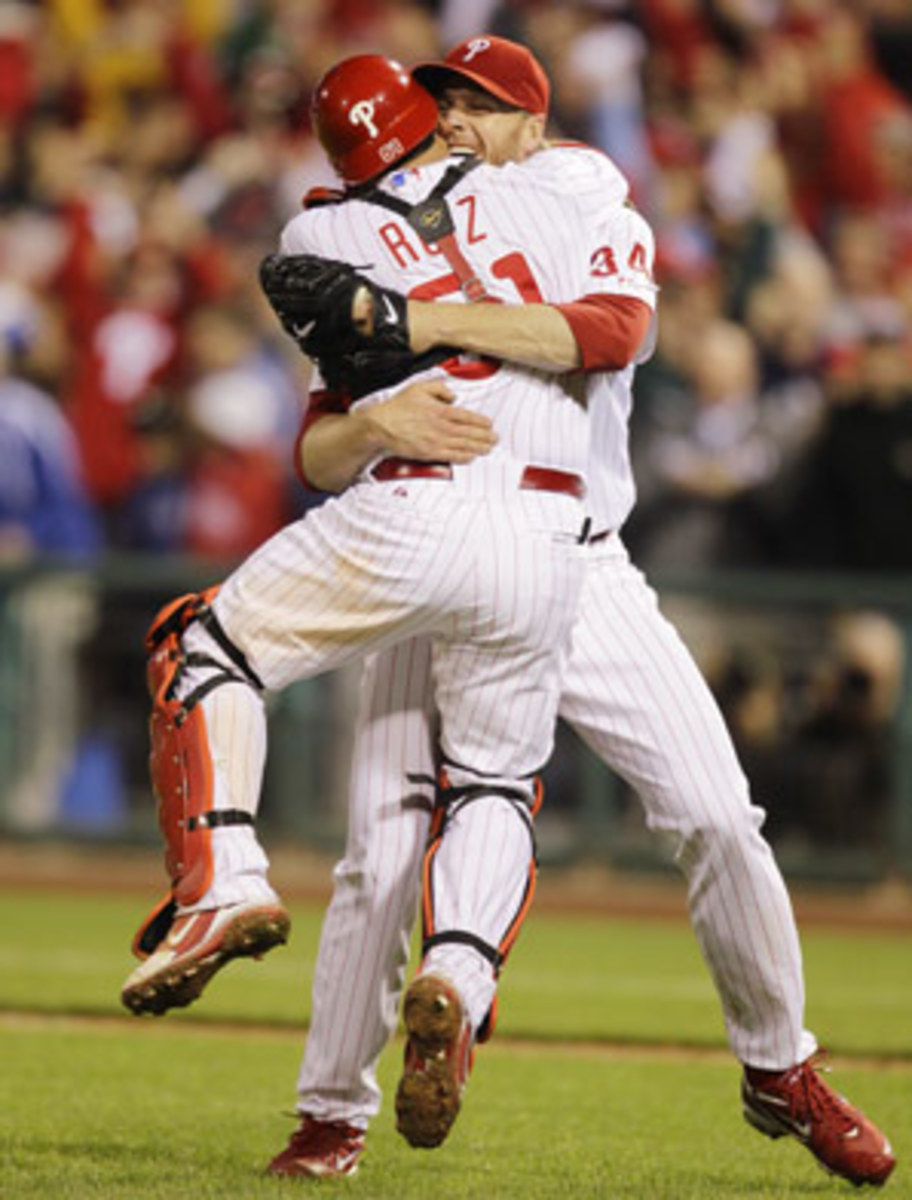The Golden Age of Sports
Even before I knew there were 34 different beers on offer at Minnesota Twins games, or watched live soccer from Europe in high-def while still in my pajamas, or paused Roy Halladay's no-hitter in mid-motion as if I were Samantha freezing Darren on Bewitched, I knew we were living -- at this very moment -- in a miraculous Golden Age of Sports.
Some of you are too callow to appreciate this, never having had a "mobile" phone whose handset trailed 50 feet of coiled cord tethered to a kitchen wall. Some of you are too calcified to believe me, not having embraced any aspect of pop culture since Bewitched went off the air in 1972.
But others know what I'm talking about, including my 76-year-old father, who purchased a smart phone last week because, he said: "I don't want to be a dinosaur." History will show he sent his first text on October 6, 2010, at 11:11 p.m., in reference to the baseball game we were both watching half a continent apart. It read, in its entirety: "I'm losing faith in the Twins." To me, it was the most transformative dispatch in telecommunications since "Watson, come quick, I need you."
For many people his age in his city, the last innovation in sports-fan technology was an ad on the Metropolitan Stadium scoreboard that read: 1-976-1313 DIAL SPORTS. That was 1981. One doesn't have to dial up sports scores anymore --one cannot dial anymore -- and so my father has embraced the iPhone, and mobile apps, and texting. Thanks to Brett Favre -- and the other smart-phone news out of Minnesota this week -- he is even acquainted, in a rudimentary way, with sexting.
As a frequent visitor to the Twins perfect new stadium, he recognizes that most of the ballparks we remember fondly were in fact dumps. The next time you go to an athletic contest almost anywhere -- a Pirates game in Pittsburgh, a Canadiens game in Montreal, an Ajax match in Amsterdam -- consider that you are in the most comfortable place by far ever devised for watching human spectacles. The ancient Colosseum, in all its gladiatorial grandeur, could not hold a Roman candle to something called Petco Park.
Whatever you think of that desiccated dog you had the other day, stadium food is far better and more varied than at any other time in history. Security officials, in my experience, treat fans less like criminals than they once did. The cost for all this comfort is often prohibitive and indefensible, of course. But Golden Ages, like all things golden, do not come cheap.
Blessedly, you can stay at home for an even better experience. There are more games more vividly presented than there ever have been. I prefer the animated wallpaper of half a dozen baseball games carried on cable every night of the week to a single game broadcast by NBC every summer Saturday of the '70s.
For years, a Sylvania commercial has played incessantly on the Fox Soccer Channel. Its tagline: "There's nothing like watching the beautiful game in stunning high-definition television." Until this season, it played during games that really were nothing like watching the beautiful game in stunning high definition, because those games were carried in less-than-stunning low definition. Not anymore. These live, sharp pictures from an island across the sea, on a channel devoted exclusively to soccer, are scarcely believable to anyone whose only window on European football was "Soccer Made in Germany," flickering, in black-and-white, on PBS in the '70s.
The same is true of journalism. It is still a marvel to me that I can read international news stories moments after they are filed, as opposed to having them brought to me, a week out-of-date, by my traveling salesman father --though that was great, too, and the thing that initially interested me in sports writing: Pristine copies of the Los Angeles Times and Chicago Tribune and New York Times, liberated from my father's briefcase after five days on the road.
My laptop still opens with the same snappy motion as my Dad's briefcase, with one difference: Inside is every newspaper in the world.
Yes, the news inside is often scandalous and depressing. It is harder than ever to believe, never mind believe in, an athlete. But we are surely better for our long-overdue disillusionment, for being stripped of our child-like credulity, than we were 50 years ago.
There is one innovation more than any other we have taken for granted in our privileged existences: The Yellow Line. The Yellow Line -- the TV innovation indicating the next first down in football -- is like the yellow line on an open road: We hardly notice it, but ought to be grateful for its presence, for without it, we would surely be lost.
Even to those who think everything was better last year or last decade or last century, this is the best time there has ever been. Not long ago, on eBay, I bought a matchbook originally distributed in Brooklyn in 1934. On it was a photo of Dodgers outfielder Buzz Boyle, my great uncle. You can view photos of him on the Internet right now, if you like, in all his Ebbets Field glory.
And that may be the clincher: Even for those who long for the past -- for some distant Golden Age -- this is a Golden Age. There has never been a better time to be wistful than right now. We have never had more access to more information about our history than we do at this instant. Nostalgia buffs will pardon -- will appreciate -- the ancient Brooklynese: When it comes to good old days, dese are dem.






